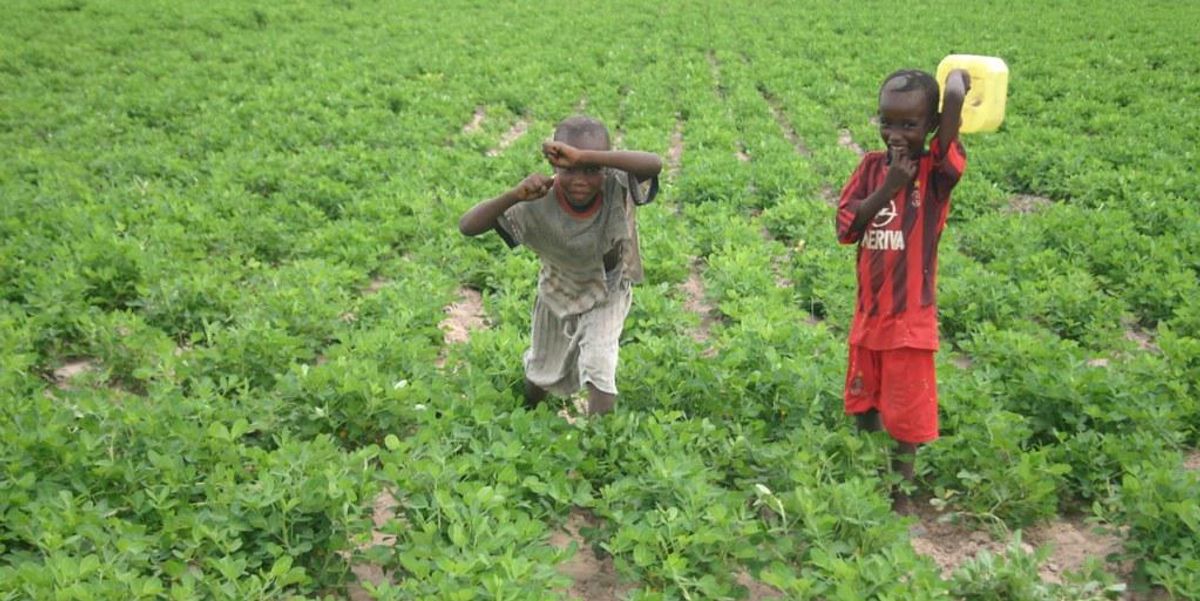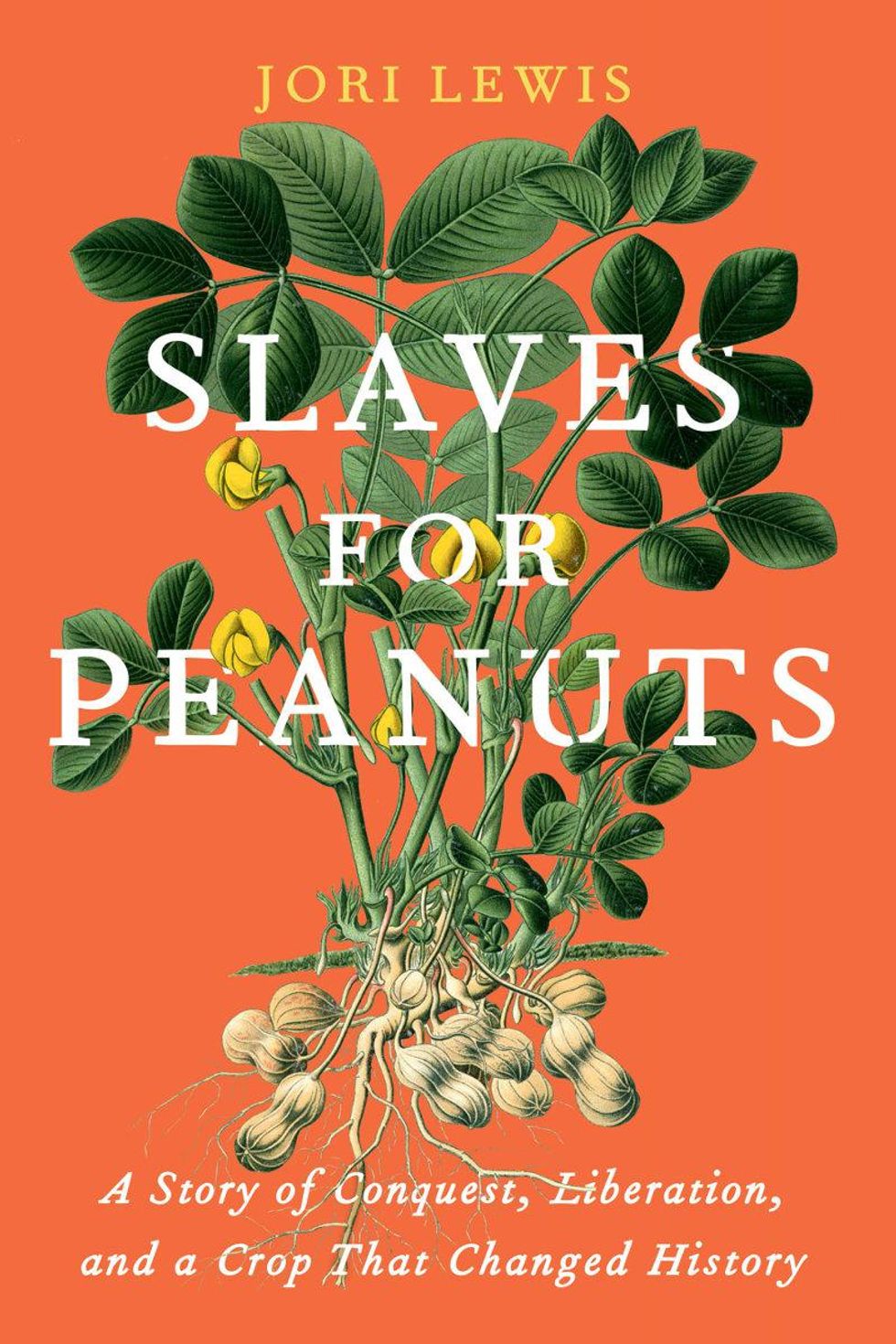
Award-winning journalist Jori Lewis, a former EHN contributor and researcher based in Dakar, Senegal, has just published Slaves for Peanuts: A Story of Conquest, Liberation, and a Crop that Changed History.
Lewis presents 19th-century Senegal at a time of turmoil. She explores how French colonialism and demand for peanut oil in Europe created a peanut boom with lasting repercussions for Senegalese agriculture and reinforced a system of slavery that persisted long after France had banned it in territories it held.
EHN spoke with Lewis about her book and writing about agriculture and the environment in Senegal today.
How was the peanut traditionally cultivated in West Africa, and how did it become a major export crop to Europe?
The peanut comes originally from South America, where it evolved and spread throughout the continent. It was probably taken quite early by Spanish and Portuguese conquistadors back to Europe, and from Europe to Africa. Peanuts were grown on a small scale and in kitchen gardens along with other complements to a diet … so, not at the same scale as cereals like millet or folio in Senegal, but grown probably like okra or cowpeas.
It expanded once there was a demand for peanut oil in Europe during the Industrial Revolution. They needed oil for maintaining their machines and steam engines. Before petroleum, they also needed oil for lighting. And, of course, they were killing whales for oil. A society that’s killing large sea mammals for oil obviously needs a lot of oil. But then, the main driver became the soap industry. Peanut oil has very similar chemical properties as olive oil and could be substituted up to a percentage in the Savon de Marseille.
In the 19th century, the Wolof kingdom of Kajoor, between Dakar and the French-held coastal archipelago of Saint Louis, became the center of the peanut boom and needed more and more people to work the land as demand increased. Explain the connection between the peanut boom and slavery.
Kajoor’s sandy soil environment was perfect for the peanut. I knew that a long time ago there had been a more robust peanut economy there; peanuts from Kajoor were so well-prized in Europe. Was it the peanut that created the expansion of slavery? In West Africa, there were people who were born enslaved. But there came to be a demand for labor in Kajoor, and that brought people enslaved through war. Why was there war? In part, because of economic developments related to European presence and capitalism.
The person who becomes an important vehicle for telling this larger story is Walter Taylor, a missionary in Saint Louis who founded a refuge for enslaved people and had to contend with colonial authorities turning a blind eye to slavery to protect economic interests, even though France abolished slavery in 1848. How did you come to realize that Taylor had the potential to carry a lot of the story?
I’d been reading a book about slavery in the 19th century, and there was a brief reference to a Sierra Leonean Protestant missionary named Walter Taylor, who established a shelter for runaway slaves in Saint Louis. I found that this Black missionary from a British-held territory had 20 years of letters with the mission directorate in Paris.
Even though Taylor was working, in a way, for the colonial enterprise, he had such an interesting backstory as a Black man in a white-dominated colonial system, as an Anglophone in the Francophone world, and as the son of liberated slaves who’d grown up in a community of people who had been liberated. I became a little obsessed with his story.
There was a movement of enslaved people from the interior trying to get to Saint Louis as a kind of promised land. But the process of claiming freedom was administratively difficult. Arriving runaway slaves would have to register with the city and say, “I declare I have a right to my freedom.” But then they had to wait three months. And within those three months, a slave owner could come and reclaim that person.
The court preferred people not bring these matters before the court, so a slave master might find the person and say, “I can leave you alone if you pay for your freedom.” But who has that much money? So Walter Taylor had the idea to take up a collection in the church. He realized there was an opportunity to evangelize among this group, who were open to the mission because it had helped them.
Taylor was trying to build a career for himself in the mission. He needed converts. But as a person who’d grown up in a community of liberated people, I think he really did care for them, and their stories resonated with his own on some deeper level.
Another strong yet contrasting character to Taylor is Lat Joor, the damel, or king, of Kajoor. What was his story?
Lat Joor became damel, was forced out by the French, and then came back through dubious methods and betrayals. He was jockeying for influence to keep his throne. He thought for a while that the French could be a tool to help him do that — before he started to understand, as maybe all colonized people eventually understand, these people are not here to help you, they are here to take your land.
Lat Joor had a lot of enslaved people. I found letter after letter in which he wrote to the [colonial] governor or commandant to say, “Please return to me my slave.” But Lat Joor is an epic, heroic figure in Senegalese history because of his resistance to colonization. I think my book shows that that resistance was not always straight. There was some collaboration before there was resistance.
You write about wanting to ensure the voices of the enslaved and others not well represented in the historical record were part of this book — a challenging task. How did you find their stories?
I wanted to include women’s voices and others who weren’t part of the elite. I also wanted to include the voices of the enslaved. I found some stories in the mission’s archives and court records, narratives of how they came to be enslaved and how they came to be free. Trying to tell this story from that perspective was really important to me, especially because sometimes an approach to popular African history tends to create hero narratives as a corrective — a very sensible corrective — to hundreds of years of denigration of African culture and history. But I also wanted to show the whole history, to say we have complicated stories about people who are not just good or bad, because we’re all complex characters with different motives, who at different points in time err on the side of goodness or evil.
What is the conversation in Senegal today about sustainable agriculture and food sovereignty?
I see Senegalese agriculture scaling up, trying to be like American or European agriculture. The same ideas of industrialized agriculture predominate. There are some small movements here, but what Senegal probably needs is extreme regenerative agriculture, and I don’t particularly see that happening. I see the agriculture industry is largely business as usual — fertilizers, pesticides. Let’s modernize. That’s something you hear a lot, which means becoming like the industrialized agriculture of America,Europe, China, or even India. All of them have their imprimatur on the way Senegal sees its agricultural system.
The baobab tree makes numerous appearances in your book. You also wrote a beautiful essay about the baobab recently for Emergence Magazine. What does it mean to you?
The baobab tree is so omnipresent in Senegal’s history and understanding of itself. But at the same time, it’s so endangered. When I travel in Senegal, I think about all those lost trees, and the amount of history they represent, because baobabs are so long-lived, almost like redwoods. It’s hard even to fix our imagination on what it means to be in the presence of a thousand or two-thousand-year-old tree, right?
Our human living memory is only like 110 years old. But the baobab tree — how long is the living memory of that tree? It’s incredible to imagine how many shifts humanity has been through in those 2,000 years.
Thinking about that long view of history brings up the role of climate, which also lurks in the background of your book and invites us to reflect on our current condition.
In a couple of chapters, I mention a period called the “hunger years,” brought on by cyclical drought. People were at the whims of the natural environment that pushed them to make political or economic decisions. You’d see more conflict sometimes, people migrating to the city. It’s really interesting to get the broad sweep of history and see how climate is its own character in the book.
Today we’re so insulated, especially in America. But even in Senegal, a certain class of people is really insulated from the reality of the climate. What’s the impact of that over the long term? We just keep cutting things down, not paying attention to what the signals are telling us.
The climate’s part of it, but our political decisions are more often than not what determines access to food, safety, water, all of it, which brings us back to Slaves for Peanuts. Unwittingly, the consumer of French soap was driving continued enslavement in Africa. It’s important to understand how our choices impact the larger system, the larger world.


Lewis’ book is published by The New Press and available from independent booksellers and online vendors large and small.
This interview has been edited for length and clarity.
Banner photo: Children in a Senegal peanut field. (Credit: Joseph Hill/flickr)





